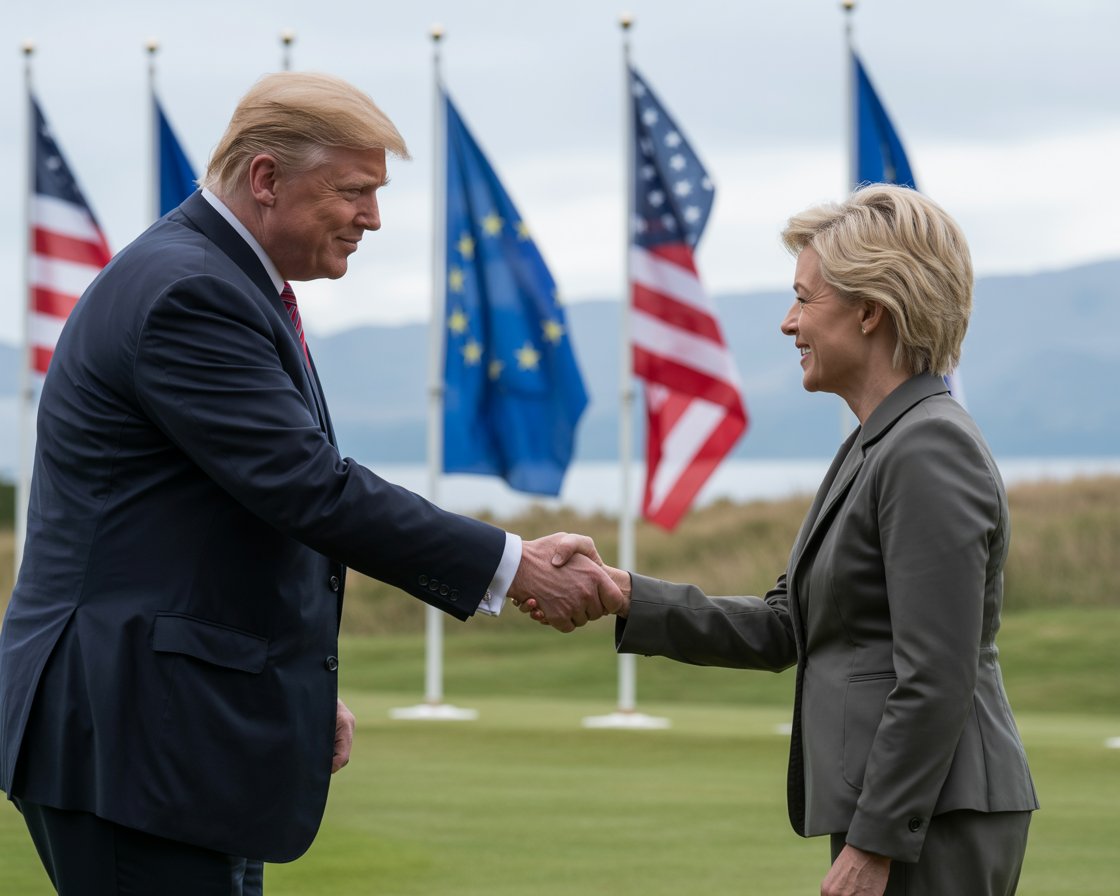President Trump’s last-minute trade agreement with the EU prevents a damaging trade war, but the 15% baseline tariff has many questioning its long-term impact.
Trump’s EU Deal Averts Trade War — But Not Everyone’s Celebrating
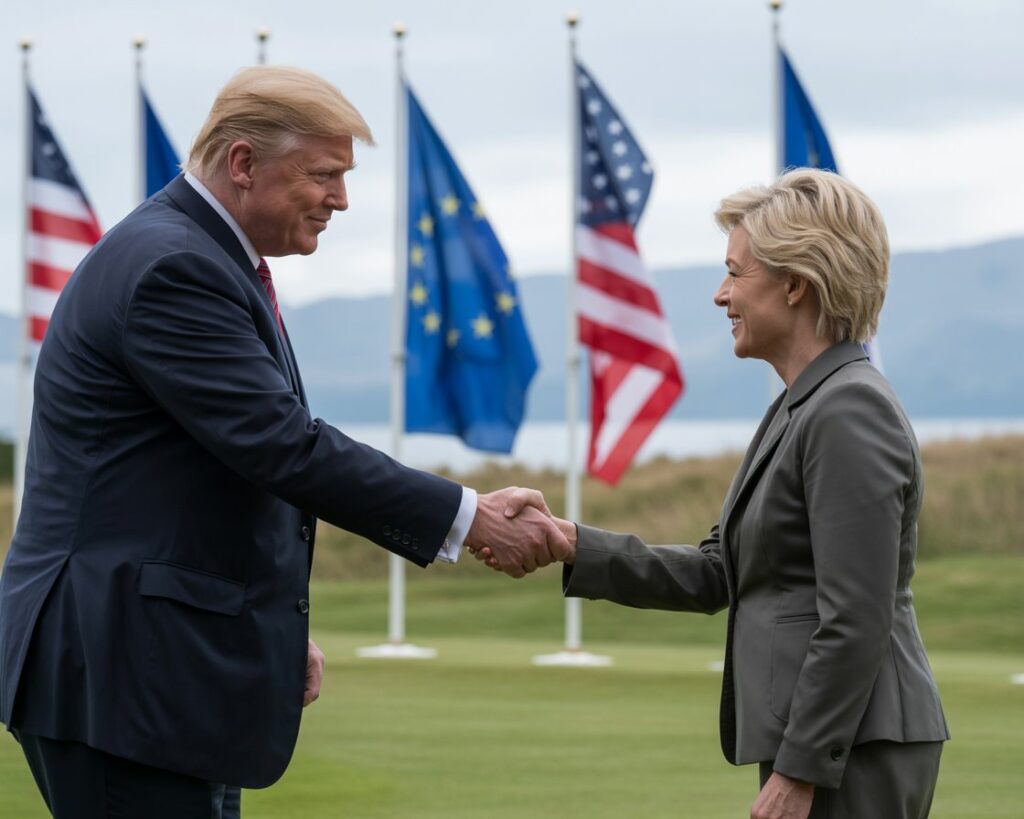
Turnberry, Scotland —
President Donald Trump and European Commission President Ursula von der Leyen reached a last-minute trade agreement Sunday, averting what could have become a full–blown trade war between two of the world’s largest economies. The deal, while offering immediate relief, has left both sides with mixed emotions and unanswered questions.
What’s in the Deal?
The agreement imposes a 15% tariff on most European goods entering the U.S. — up from Trump’s earlier 10% and significantly higher than the pre-Trump average of around 1.2%. However, it’s notably less than the 50% tariff Trump threatened if negotiations failed.
Tensions escalated in late May when Trump declared negotiations with the EU were failing. “Our discussions with them are going nowhere,” he posted on Truth Social. In the Oval Office, he added, “I’m not looking for a deal. We’ve set the deal — it’s at 50%.”
That tough stance shocked EU leaders, prompting swift diplomatic efforts. Von der Leyen personally reached out to Trump, promising a more aggressive negotiation pace. Her efforts helped prevent a collapse in talks, leading to Sunday’s framework agreement.
A Deal Made Under Pressure
Negotiations were prolonged due to disputes over U.S. tariffs on steel, aluminum, pharmaceuticals, and more. The original July 9 deadline was missed, pushing the implementation of “reciprocal” tariffs to August 1. During Trump’s trip to Scotland, he and von der Leyen finalized a loose framework — light on specifics but symbolically powerful.
Both sides avoided catastrophe. A potential economic war was sidestepped, which could have severely disrupted transatlantic supply chains and driven up consumer prices.
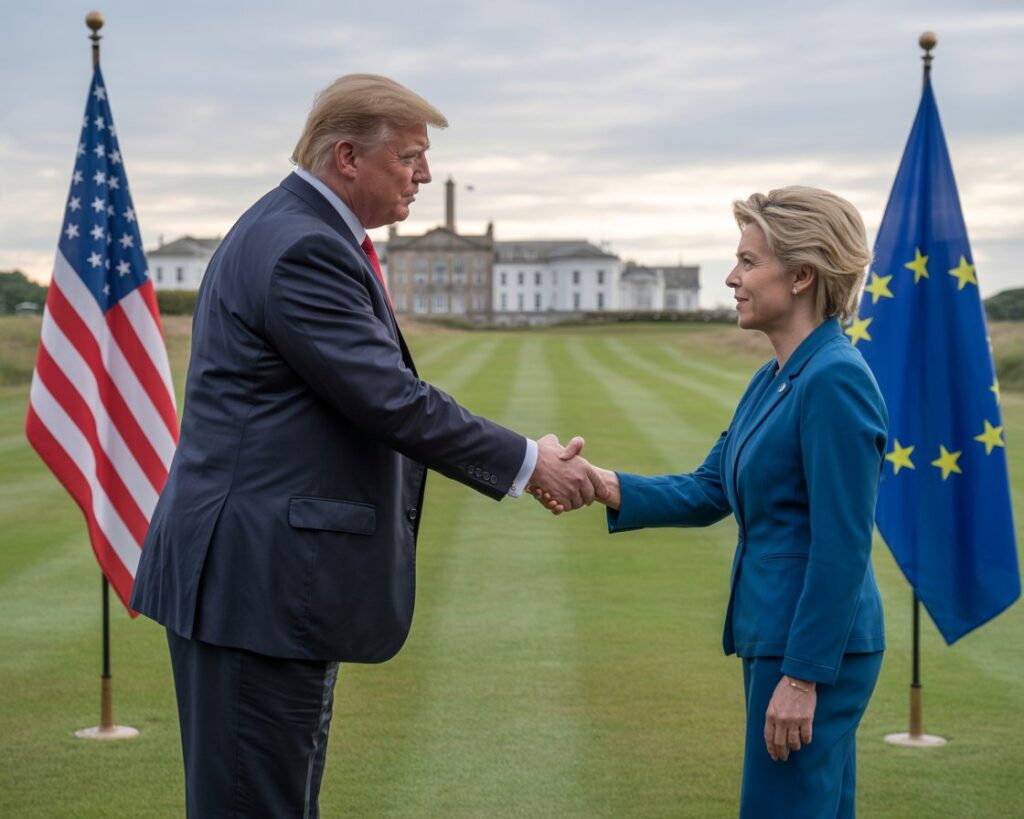
Reactions: Relief, Not Joy
The mood following the announcement was more relief than celebration.
“We made it,” Trump said. “It’s going to work out really well.”
“We hit exactly the point we wanted,” said von der Leyen, emphasizing balanced trade and job growth on both sides of the Atlantic.
Markets responded positively:
- Dow futures rose 150 points (0.3%)
- S&P 500 futures increased by 0.3%
- Nasdaq futures rose 0.4%
Experts echoed the relief.
“The U.S. and EU seem to have avoided a self-destructive trade war for now,” said Jörn Fleck of the Atlantic Council.
What Did the EU Agree To?
According to the deal, Europe will:
- Invest $600 billion more into the U.S.
- Purchase $750 billion worth of American energy
- Eliminate tariffs on key goods like aircraft parts, semiconductors, generic drugs, chemicals, and some agricultural items
But critics point out that many of these commitments were already underway. Also, the deal does little to address non-tariff barriers such as digital taxes and value-added taxes — major sticking points for Trump’s team.
“There are many things that puzzle me about this agreement,” said Maury Obstfeld of the Peterson Institute.
Winners and Losers
Some industries, like aerospace and semiconductors, praised the “zero-for-zero” tariff rule.
“It will grow jobs and strengthen U.S. manufacturing,” said Airlines for America.
However, others aren’t as happy. The 15% baseline tariff means consumers will pay more for European goods.
“This doesn’t enhance trade — it taxes it,” said Joe Brusuelas, chief economist at RSM.
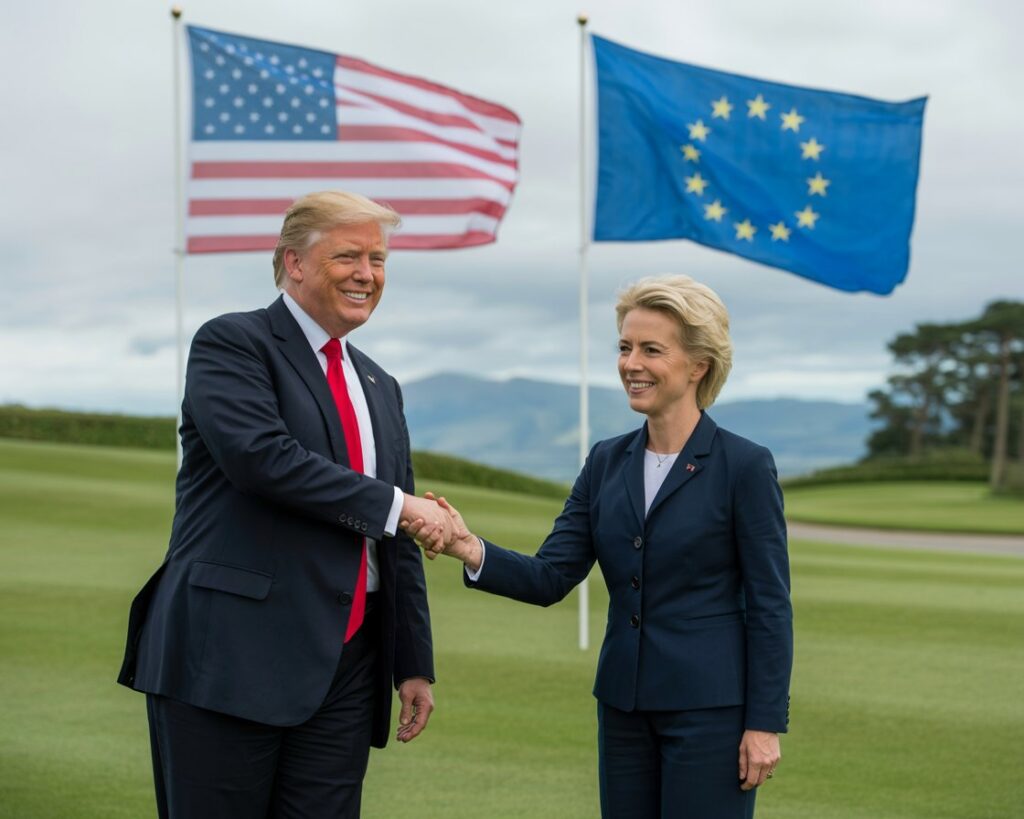
Auto Industry Woes & Pharmaceutical Doubts
The deal is a setback for Detroit automakers. A 15% tariff on EU cars is lower than the 25% paid on cars built in Mexico, creating an uneven playing field.
Pharmaceuticals were initially included, but von der Leyen admitted that Trump might still raise tariffs on drug imports, risking that part of the deal altogether.
Final Thoughts: A Fragile Win
Though lacking in detail, the deal was essential to avoid tit-for-tat retaliation that could’ve hit crucial services sectors.
“A deal is better than no deal,” said Brusuelas.
Now, negotiators face the real challenge: hammering out the fine print and managing expectations in an uncertain trade landscape.
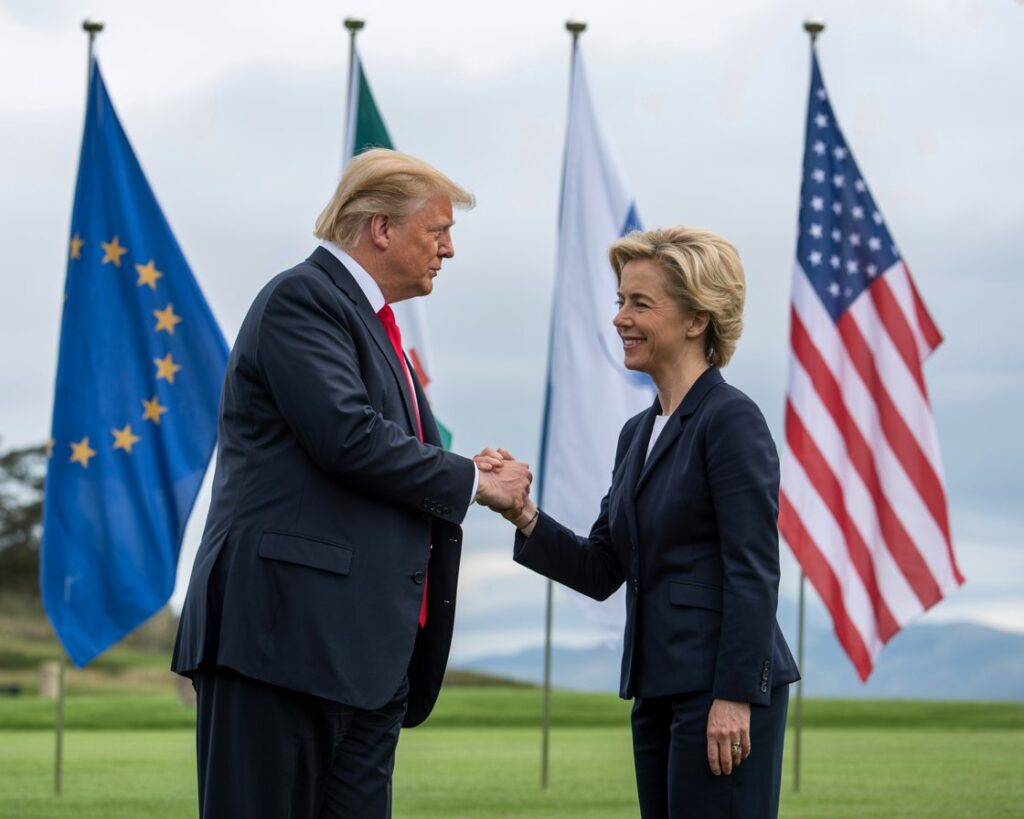
FAQs
Q1: What is the main highlight of Trump’s EU trade deal?
A 15% tariff was set on most European goods, avoiding a 50% tariff threat and preventing a trade war.
Q2: Who benefits most from the deal?
Industries like aerospace and tech that now enjoy zero tariffs on specific parts and materials.
Q3: Will this raise prices for U.S. consumers?
Yes, most European imports will become more expensive due to the 15% tariff.
Q4: Is this deal final?
No, it’s a preliminary framework. Many details, including enforcement and exceptions, are still being worked out.
Q5: What does the deal miss?
It doesn’t resolve key issues like non-tariff barriers and the digital services tax.
